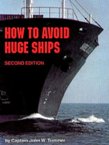Kursk1943
Posts: 445
Joined: 3/15/2014
From: Bavaria in Southern Germany
Status: offline

|
quote:
ORIGINAL: Kull
I am not a medical professional, but to me the Diamond Princess is the closest thing we have to a coronavirus infection laboratory. Or at least a contained environment, where you might be able to look at the numbers and draw some conclusions. As far as we can tell, the virus began with a single passenger who boarded on 1/20 in Japan and departed in Hong Kong on 1/25. He was diagnosed in Hong Kong 6 days later, which is when the cruise line was notified and the saga began.
There's an article (mostly anecdote and innuendo) on what happened aboard during this period. Although readers are advised to have a large grain of salt close to hand, it does suggest that there was a fair amount of chaos involving the process of testing and treatment, and the entire environment was hardly "hospital sterile". Which, for our purposes, is actually kind of ideal since in that sense it's pretty close to what we're going to see as and when this thing rises up elsewhere.
Some numbers:
- 2/1: There were 3700 passengers and crew when the cruise was routed back to Yokohama
- 2/4: The ship arrived and was placed in quarantine.
- 2/6: Announced that 41 passengers/crew tested positive (41)
- 2/9: 66 more positives (107)
- 2/11: 39 positives (146)
- 2/16: 67 positives (213). "High risk" individuals identified, 67 of which tested negative, 12 of these to be disembarked.
- 2/18: 169 positives (382)
- 2/19: Quarantine period ends. 600 "guests" who tested negative allowed to depart (will undergo additional 14 day quarantine in their home countries)
At that point I can't find additional sources to give us the daily counts, but as of today, this website says the numbers are:
- 3/1: 705 cases, 7 deaths, 100 recovered, 36 "serious/critical"
So let's do some math:
- If we assume the contagion started on 1/20, it took 43 days to infect 705 of 3700 (19%)
- 7 of 705 have died, so the mortality rate (among those exposed) is 1%
- At least some of the 36 "serious/critical" cases could still succumb, so the worst case fatality rate would be 6% (although that's clearly unlikely)
The takeaways:
- "Local" fatality rates could get pretty high when/if this thing gets into vulnerable populations. Nursing homes or old age communities could be scary places.
- It's hard to imagine any environment "more communal" than a cruise ship, yet with unrecognized and uncontained spread underway for 16 days, we still have a pretty low contagion rate which appears to have maxed out at 19%.
- That's not nothing, but it certainly implies that if people take reasonable precautions, they should be pretty safe. And for those who are not in the "high risk" categories, it's more likely to hit you as an extremely nasty case of the flu. Unpleasant yes, but not the end of the world.
I'm a bit sceptical about the validity of theses numbers, because people on such ships really don't represent the average. I once was on such a cruise ship with my mother and I was one of the youngest there being 50... I think the infection rate and the mortality rate is a lot higher with very old people. I think the infection rate and the mortality rate is a lot higher with very old people.
In the news yesterday our secretary of health stated that they found out that a lot of people never know they have the virus because they don't develop any symptoms at all. Therefore the mortality rate is suspected to be much lower if you included all these cases, too. The actual mortality rate is calculated in relation to people showing symptoms.
_____________________________
|
 Printable Version
Printable Version





















 It is full of trace minerals and is high in boron which is good for the bones.
It is full of trace minerals and is high in boron which is good for the bones. 

 I think the infection rate and the mortality rate is a lot higher with very old people.
I think the infection rate and the mortality rate is a lot higher with very old people. 


 New Messages
New Messages No New Messages
No New Messages Hot Topic w/ New Messages
Hot Topic w/ New Messages Hot Topic w/o New Messages
Hot Topic w/o New Messages Locked w/ New Messages
Locked w/ New Messages Locked w/o New Messages
Locked w/o New Messages Post New Thread
Post New Thread